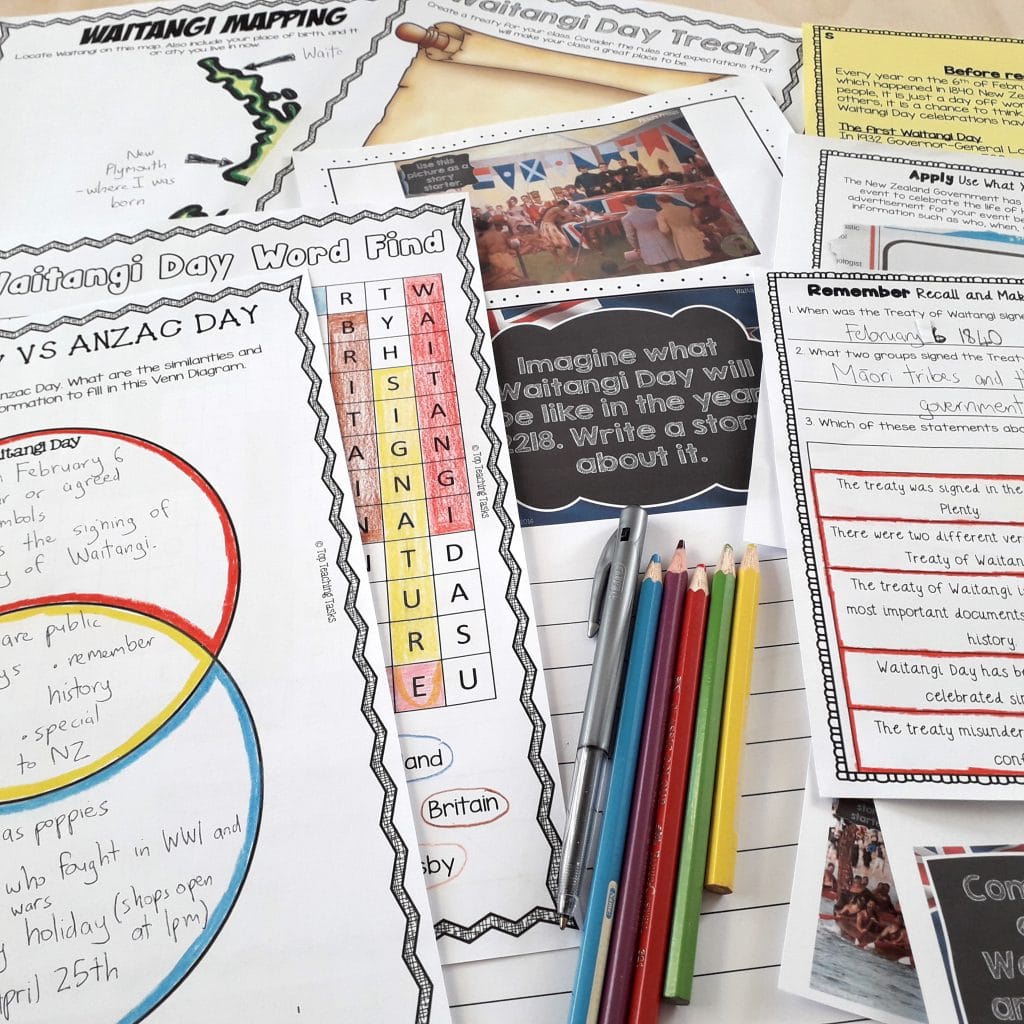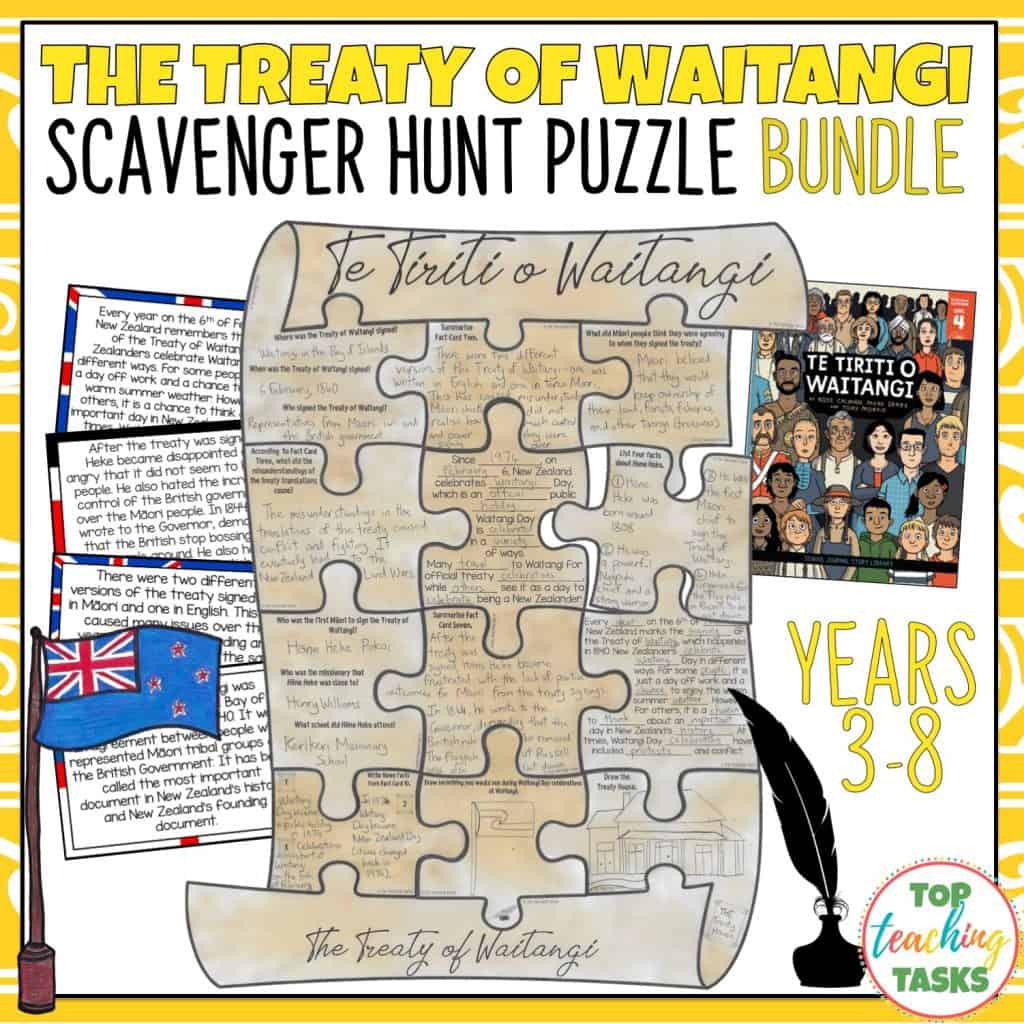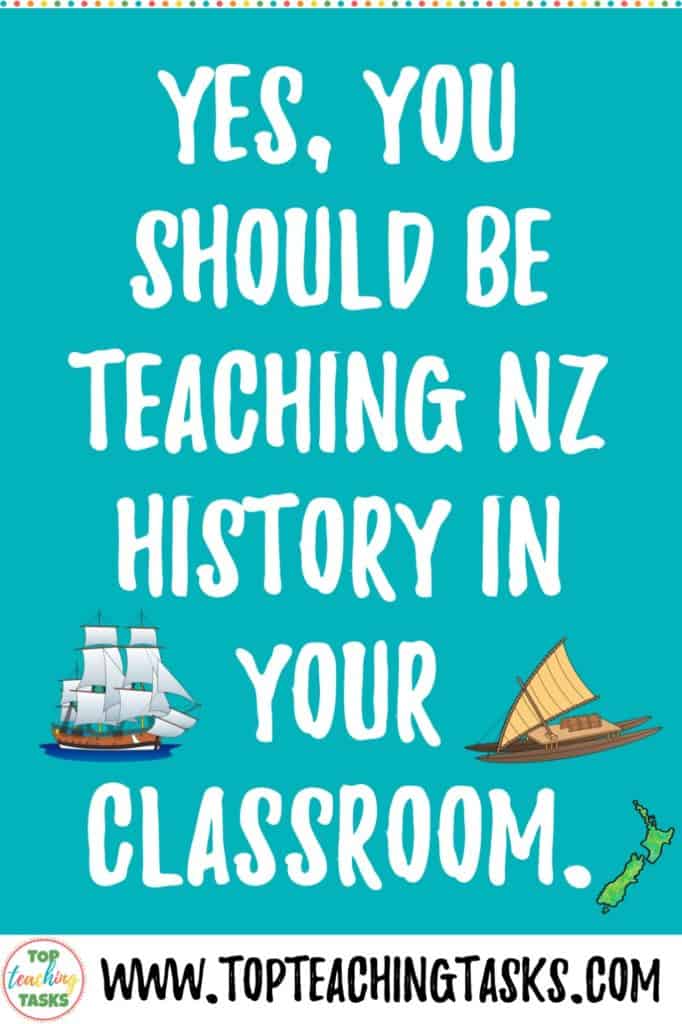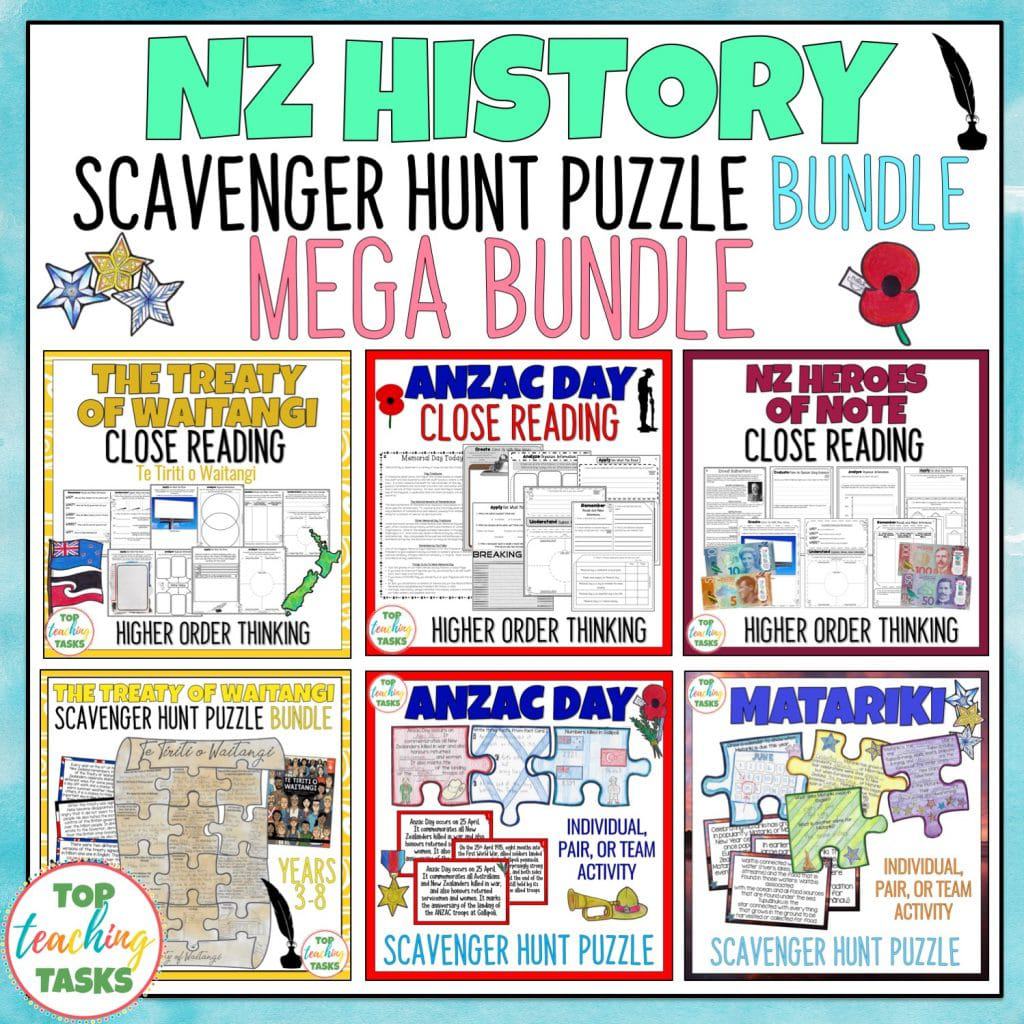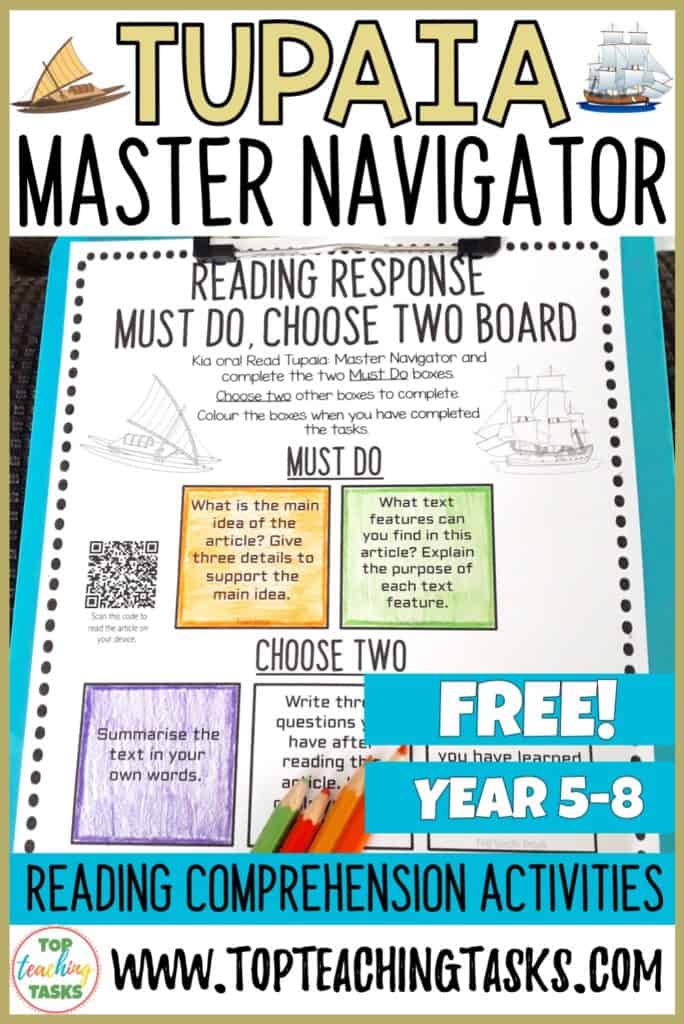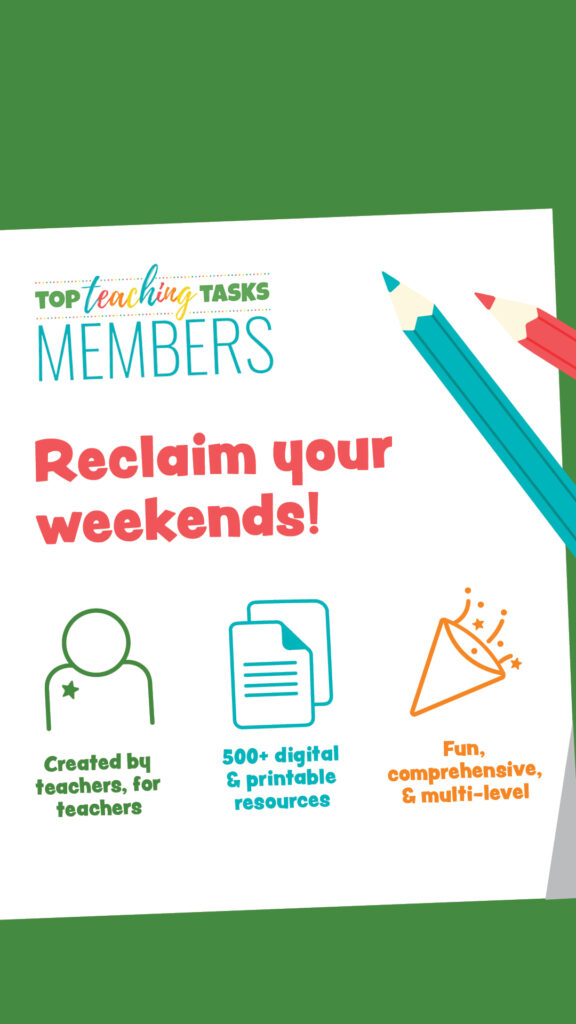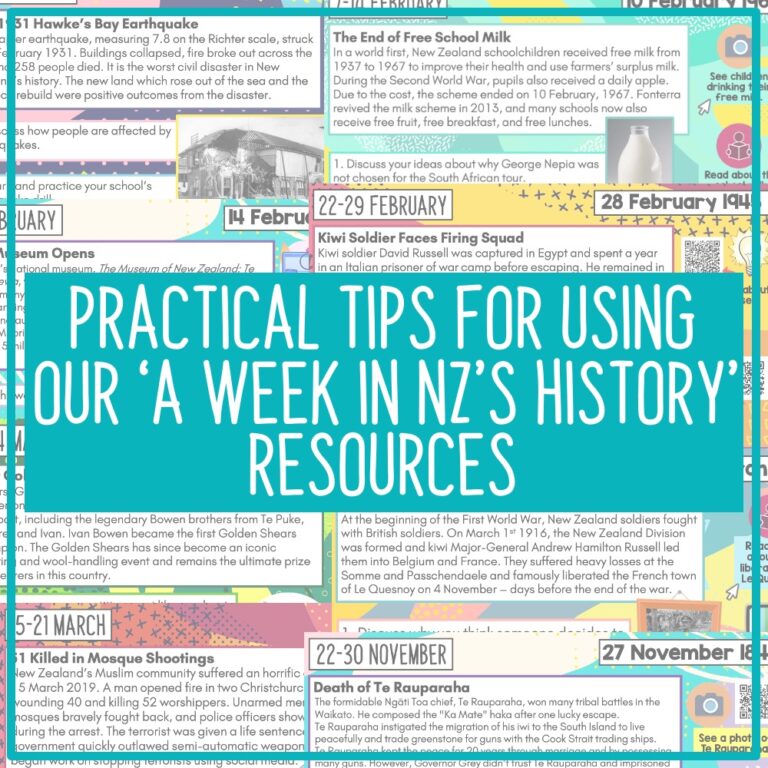New Zealand History Teaching Topics You Must Explore
If you are looking for New Zealand History teaching resources, here are four topics you definitely need to cover.
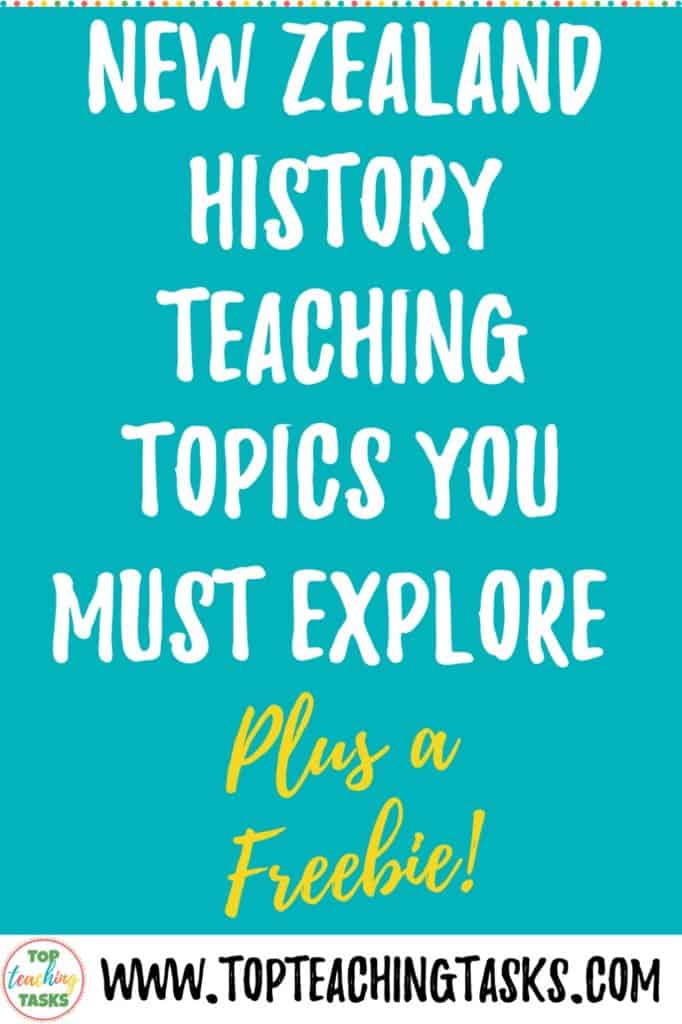
When studying New Zealand’s history, model to your students how to use critical thinking skills. Demonstrate how to look at a piece of information and analyse it critically. Students can then think critically to explore who is telling the story and whose story is being told.
1. Te Tiriti o Waitangi – The Treaty of Waitangi
Te Tiriti o Waitangi – The Treaty of Waitangi is a part of New Zealand’s history that most students are in some way familiar with. In saying this, that doesn’t mean that it is always taught well. Perhaps it is briefly highlighted as a way to explain a class treaty you are creating, or it is discussed before or after the Waitangi Day holiday.
Something important to consider when teaching the Treaty of Waitangi is what I call “treaty fatigue”. I discussed in my previous blogpost, Treaty of Waitangi Teaching Ideas how Treaty fatigue can result from the repetition of the same information year after year. The last thing you want to hear is moans and groans when you mention The Treaty of Waitangi.
Therefore, my challenge to you is to get creative. Think of interesting and unique ways of exploring this important part of our past, present, and future. What I would love to see is schools that break down this topic by year level so that different aspects of Te Tiriti o Waitangi are explored in Year One, Year Two, and so on. This would help with the treaty fatigue as the same activities and knowledge would not be repeated and repeated and… you get it!
Furthermore, it is important to consider the perspectives you are teaching when exploring the treaty with your students. Often we teach the treaty through an ethnocentric lens, but it is crucial to share the Māori story, perspective, and voice.
A resource that I would highly recommend Te Tiriti o Waitangi – written by Ross Calman and Mark Derby, and illustrated by Toby Morris. The book covers the arrival of Polynesian explorers through to the modern-day Treaty settlement process. Read more about it and download the PDF version of it for FREE by clicking here.
We have a great range of social studies and literacy resources that explore the Treaty of Waitangi and Waitangi Day from a range of perspectives. Click here or on the pictures below to see our full range.
2. Pacific and European Explorers and Early Colonisation
This huge aspect of New Zealand is sadly one that I was never taught in school. I was aware of some of the stories that many New Zealanders commonly know – the significance of Abel Tasman and Captain James Cook (Tasman had a sea named after him so he must be pretty important, while Cook’s name graces a country, a mountain, a strait and more). But the stories and perspective of Cook and Tasman are only one part of this epic history.
Through investigating Pacific and European Explorers and Early Colonisation, your students will get an up-close-and-personal example of how critical thinking is crucial when considering history. Just look at any coverage of the Tuia 250 event that is coming up in New Zealand. While some are calling it a celebration of the first meeting of Māori and Europeans, others are pushing back, asking tough questions, and ensuring that a full picture of history is being told. You can read more about this in my blog post “Yes, You Should Be Teaching New Zealand History.”
Pacific and European Explorers Topics To Explore
There are so many fascinating topics that can be covered when looking at this topic. Some aspects that I encourage you to explore with your students include:
- Maui and the giant fish (looking at the pūrākau/myth of Aotearoa’s discovery)
- Who was Kupe?
- Waka Hourua
- Polynesian Navigation
- Who was Abel Tasman?
- Who was Captain James Cook? (including who he was to Māori)
- Who was Tupaia?
- The First Meeting of Māori and Tasman (remembering to explore multiple perspectives)
- The First Meeting of Māori and Cook (remembering to explore multiple perspectives)
- Tuia 250 Commemorations
- Should Captain Cook’s first meeting with Māori be celebrated or commemorated?
Would you like to save your time and cover all these topics in your classroom? We have you sorted with our Voyagers New Zealand Explorers Web Quest activities. Click here or on the picture below to see more.
3. The New Zealand Land Wars
Another New Zealand History teaching topic of significance is the New Zealand Land Wars. There has been a real groundswell in New Zealand to push for the New Zealand Land Wars to be taught in New Zealand Schools.
In 2015, a group of high school students from Otorohanga College were successful in calling for a National Day of Commemoration for the New Zealand Land Wars. The national commemoration will take place each year on the 28th of October.
The prominent website, Stuff launched a campaign in 2018 called Time to Tell Our Story. This also argued that the New Zealand Land Wars should be included in our national curriculum. As Jonathan McKenzie stated:
Kiwi school kids can leave the education system knowing more about Tudor England than the New Zealand Wars. This is a ridiculous situation and a sad indictment on our commitment to partnership under the Treaty.
The New Zealand Land Wars includes battles fought throughout New Zealand. This gives schools, classes, and teachers the opportunity to explore conflicts unique to where they live. For example, some schools in Tauranga look at the Battle of Gate Pa, as it has special significance to where they live and to the history of their area.
One aspect that is important for students to reflect on is how attitudes and perceptions of history can change over time. For example, in recent years, both the Māori people of Parihaka and Tauranga have received apologies for the actions of the British/Europeans during the New Zealand Land Wars.
We’ve put together a resource all about the NZ Land Wars. Click here to purchase this now.
4. The Invasion of Parihaka

Sadly, in New Zealand, the 5th of November is more well known as Guy Fawkes Night than for commemorating the invasion of the peaceful settlement of Parihaka by the British Crown. The western Taranaki settlement of Parihaka was home to a powerful, yet peaceful resistance to the government’s confiscation of Māori land in the mid to late 1800s. On the 5th of November 1881, hundreds of government troops entered the village, destroying homes, evicting villagers, and arresting their leaders.
This is a story that must be told, and for that to happen, we must make space in our classrooms to tell it.
I have put together a free resource that explores the events of Parihaka and its enduring legacy through a range of perspectives. You can find this free resource here.
5. New Zealand Protests
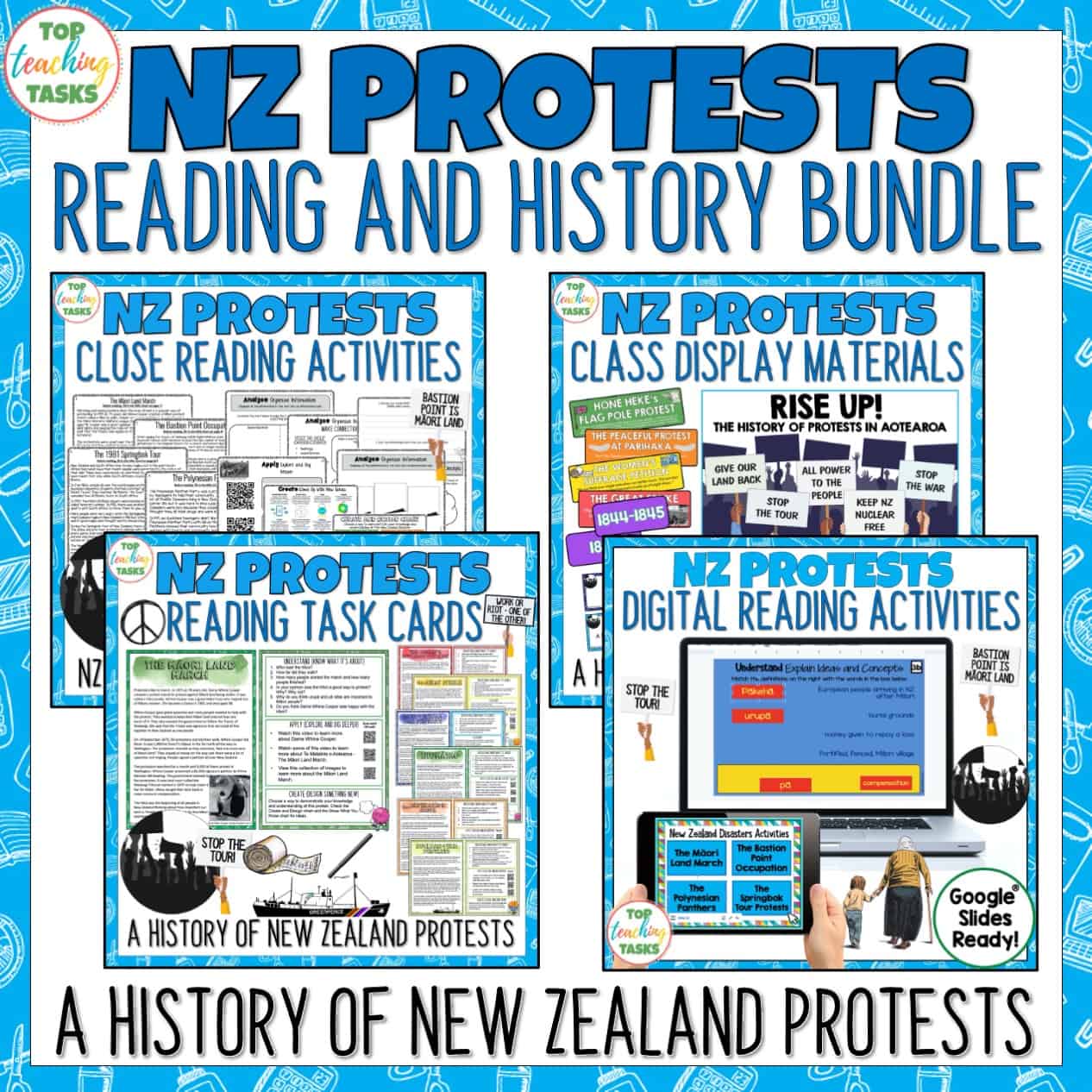
We’ve put together a set of integrated reading and history resources that explore a range of Aotearoa New Zealand Protests across history. Your learners will explore momentous and powerful protests such as the Māori Land March, the Bastion Point occupation, NZ’s Nuclear-Free protests, the Springbok Tour Protests, the invasion at Parihaka, and more! Click here to learn more about these resources.
Save with a New Zealand history teaching bundle
Did you say Freebie?
During October, New Zealand is commemorating 250 years since the first onshore meetings between Māori and Europeans. An important, but lesser-known, figure in this part of New Zealand’s history is the navigator and high priest Tupaia. His story is told in an article in the August 2019 Level 3 School Journal. This is suitable for Year 5 to Year 8 students.
This Tupaia Reading Response activity includes a print-and-go worksheet set out in a Must Do, Choose Two style. Build independence and student agency through providing choice. Click here to download the freebie.
All the best for your study of New Zealand history. Your students will be better for it!


